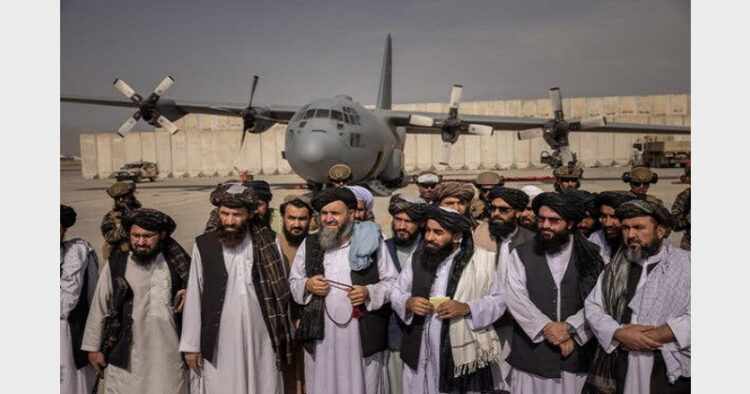It is good that more and more world organizations and states are reaching out to common Afghans today. According to reports, the United Nations has recently set up a special trust to provide some cash directly to Afghans. The European Union pledged 1 billion euros towards helping the Afghans . The U.S. Agency for International Development has pledged $ 64 million . Chinese Foreign Minister Wang Yi has announced an aid worth 200 million yuan ($30.96 million). And so on.
Observers say such aid would go a long way to address the crisis common Afghans have been confronted with since the Taliban returned back to power in Kabul in August this year . Thousands of Afghans, who used to work for governmental and nongovernmental organizations until recently, are jobless today. Over 14 million Afghans, half their total population, do not have enough to eat . One in two Afghans faces Phase 3 "crisis" or Phase 4 one that is just one step below a famine.
The observers , however, warn against letting any aid fall into the hands of the Taliban in Kabul . They say that after the Taliban grabbed power in Kabul, Washington did right to freeze over $ 9 million of Afghan government assets. The European Union, the International Monetary Fund and other multilateral organizations stopped disbursing their aid to the Afghan government .
All such sanctions against the Taliban regime must continue. Given their radical Islamist nature and people-hostile pattern of functioning , the Taliban are sure to misuse any funds they would have. Experience is that the aid provided to the grief-stricken through any such rogue government seldom gets to the people it is meant for. It often ends up in their leaders' French, Swiss, or Turkish bank accounts. Also, such aid goes into fomenting Islamist terrorism.
The observers suggest all aid to Afghanistan may be channelled through non-profits and U.N. agencies and adequately monitored . The international community must be tough with the Taliban. It should see to it that the Taliban regime does not reverse the whole process of development that had been underway during the last two decades in Afghanistan.
According to an estimate, the United States gave over $ 150 billion in non-military aid to Afghanistan from 2001 to 2020. US allies and international organizations also pumped in billions. This aid funded education, and health care in the country. It helped life expectancy to rise to 64.8 years by 2019. The aid helped build about 20,000 elementary schools and a number of universities in the country. The number of students jumped from 900,000 in 2001 to more than 9.5 million in 2020. In 2001 there was no female college student. There were over 55 thousand in 2019.
New Delhi must be specifically vigilant about the activities of the Taliban in Afghanistan. During the last two decades, until the Taliban grabbed back power in Kabul , India invested billions of dollars in Afghanistan. New Delhi has to protect its assets in the country.
Besides, the Taliban have had close ties with the Pakistan Army and anti-India terrorist groups such as LeT and the JeM. With Taliban back in power in Kabul, all such anti-India elements may find it easy to use Afghanistan to hurt India.
The Taliban today are running Afghanistan as they were back in the 1990s. Notwithstanding the recent dialogues Washington, Brussels, Moscow and Tehran had with the representatives of the current Afghan regime, there is little change in their radical Islamist world view and approaches to accomplish it.
( The author is a Delhi-based journalist )














Comments